The fiddle-and-cello duo discuss how friendship, tradition and groove shaped their debut album One Year Since

Read more Featured Stories like this in The Strad Playing Hub
Fiddle player Kate Gregory and cellist Brendan Hearn bring an inventive energy to traditional music. Drawing on American Old Time, Irish and other folk traditions, the duo balances deep-rooted familiarity with a fresh, forward-looking sound. Gregory’s rhythmic, melodic fiddle lines intertwine with Hearn’s resonant, driving cello, creating arrangements that are at once grounded and exploratory.
Friends first, they met at fiddle camps on both US coasts, where late-night sessions sparked a lasting partnership. Since their debut at the Boston Celtic Music Festival in 2023, they’ve performed across the country, building a repertoire that mixes traditional tunes with originals. Recorded in Portland, Oregon, their debut album One Year Since captures that evolving dialogue – a reflection on time, distance and shared musical language. Kate and Brendan spoke with The Strad’s US correspondent Thomas May about how their duo sound came to life and the making of the album.
How did you decide which tunes and songs best represented this first chapter of your work together?
Kate and Brendan: Over the past few years, we’ve played music together from multiple traditions. Irish and Old Time probably feature the most, but we’ve dabbled in traditions including Swedish and Scottish music. We’ve also been composing our own tunes in the vein of different traditions (usually Irish and Old Time). Sometimes we write a tune together; sometimes one of us will write a tune and bring it to the duo. The combination of playing traditional tunes alongside our own compositions has been a defining element of our partnership, but for this album we wanted to highlight the original music we’ve written and offer something new to listeners. Our sound really started to solidify when we began playing Old Time music together, so the tracks on the album represent the intersection of our original music and Old Time music.
The combination of playing traditional tunes alongside our own compositions has been a defining element of our partnership
Our sound and shared creative process evolved from playing tunes we wrote in the Old Time fiddle tune style. ‘One Year Since’, the title track, is one of those tunes. I (Kate) wrote it during the pandemic. When Brendan and I first played it together, he brought so much chordal and rhythmic dimension that this tune had that magic spark and we knew we wanted to record it.
‘Goodbye Ruby’ and ‘Fiddle in the Attic’ are also tunes I wrote, and ‘Sing a While Longer’ is a song Brendan wrote from a poem. Like ‘One Year Since’, when we played them together they just sat really well with how we meet each other rhythmically and melodically. ‘Warm Grey Day’ is a tune we wrote together that fits into a broader realm of traditional music. We wanted to include it as an example of a different dimension of our tune writing. The only cover is ‘Little Bird’ by Emmylou Harris and the McGarrigle Sisters, which we arranged and wrote a fiddle break for. When we started playing it together, this song also had a spark that made us want to get into the studio.
You first connected at fiddle camps and through the Ministry of Folk. What made you decide to take the leap from friends and collaborators to forming a duo?
Kate and Brendan: We met at Valley of the Moon fiddle camp in 2016, but it was several years before we really connected musically. In 2019 and early 2020 we started playing together more regularly. Then, during the pandemic, we were both working on the Ministry of Folk project – which supported musicians through online performances and teaching opportunities – and discovered we really enjoyed working together. Through many Zoom calls, we learnt about our similar approaches to projects. When we came out of the pandemic and started playing together again, the foundation of collaboration and friendship we had built made forming a duo an obvious next step.
There were a couple of specific moments when our synergy really revealed itself. One was when Kate visited Brendan in the summer of 2021. We played tunes from a lot of different traditions and started experimenting with our fiddle and cello partnership. We felt really well matched on how we approached Old Time tunes and rhythm.
Another moment was when we worked up an arrangement of the song ‘Reasonland’ by Antje Duvekot. We had both grown up listening to a recording of it from a Solas album. Singing vocal harmonies on that song made us excited about our vocal blend and inspired us to incorporate more songs into our duo project.
Fiddle and cello make a distinctive pairing in folk music. What do you each bring to the mix? How do your instruments complement one another?
Kate: Brendan has such a creative approach to backing and can switch seamlessly between playing chords and playing harmonic lines, without ever losing the rhythm. His cello playing brings a steady and grounded element to our duo. Because they are essentially treble and bass versions of each other, I think fiddle and cello naturally complement each other really well. Brendan knows how to leverage both the deeper bass notes and higher notes to create a whole story behind the melody.
Brendan: Playing with Kate feels like there is this ever-present grid that we can operate on rhythmically, with neither one of us doing very much work to keep the other person there. Because the groove is so good, we are freed up to swirl around the melody, chords, solos, and everything in between. I watch Kate’s bow arm a lot when feeling out the groove of a tune, as it is really informative as to how to approach backing and support what she is doing. It can feel like a dance, where Kate will play these great soaring melody parts and I break away to do chords and supporting lines, after which we merge back up again on the tune. All the while, the groove stays in lock-step.

Kate, you began with classical violin before moving into Irish and other traditional styles, while you, Brendan, have developed a unique voice on the cello inspired by other folk cellists. How have your personal journeys shaped the duo’s sound?
Kate: I was a gregarious kid, and I don’t think playing violin really clicked for me until I started playing regularly with other people. One of my closest childhood friends played the cello, and when we started playing duets together I remember feeling really motivated to practise. Something about communicating with another person through notes rather than words reeled me in. I played in orchestras and other ensembles throughout middle school and high school, and again I was invigorated by the conversations between our individual instruments.
I didn’t start learning traditional music until I was in college. I had actually taken a break from playing violin during my freshman year – I think I felt isolated in my personal practice. But when I met a local Irish fiddler named Adam Agee, I immediately knew I wanted to start learning to play Irish fiddle. Adam encouraged me to play at sessions and to attend fiddle camps. When I discovered the social element of playing traditional music and learning shared tune repertoires, I was totally hooked.
Playing in Irish sessions and Old Time jams taught me how to be responsive to what other players around me were doing, and I fell in love with these conversational elements of the music. I was also completely mesmerised by the amount of rhythm fiddle players could cultivate with their bows and the way players could lock in with each other rhythmically.
I was mesmerised by the amount of rhythm fiddle players could cultivate with their bows
Because of my classical background, fiddle-style bowings felt unfamiliar to me. But by mimicking other players in sessions, listening to recordings, and especially diving into Old Time bowings – with help from fiddler Natalie Padilla – I developed my own sense of rhythm.
Communicating a driving beat with my bow and playing in a responsive way are things I bring to my duo with Brendan. Together, we create a rhythmic foundation and then allow the conversation between our two instruments to grow more complex from there.
Brendan: Growing up in a musical household, I was lucky to be exposed to different genres from an early age. My parents took me and my siblings to the kids’ session at a local Irish pub, where we learnt some of the tunes and got to see how a session works. I remember some very kind parents there encouraging me to play what felt right on cello, as I was usually the only one. Since there is not a deep cello tradition in Irish music, I often felt like I was walking this musical journey without a clear path to follow.
My dad, brother and I went to Alasdair Fraser’s Valley of the Moon Fiddle Camp in Boulder Creek, California, in 2008, when I was in high school – and all that changed immediately. I was in heaven learning from amazing folk cellists like Natalie Haas, Tristan Clarridge, Valerie Thompson, Mike Block and many others. Seeing how they approached backing and melody playing in many different styles gave me a model for how to develop my own voice on the cello and my own ‘chop’.
Chopping and shuffling the bow allowed me to mimic what role other instruments might play in a certain tradition, re-imagined on cello
My ‘chop’ and shuffle technique is the percussive mechanism with the cello bow that I learnt at Valley of the Moon and expanded upon over the past two decades. Chopping and shuffling the bow in different styles allowed me to mimic what role other instruments might play in a certain tradition, now re-imagined on cello. To fill in what a guitarist would do, I think about quick and tight 8th notes in a pattern that doesn’t move very far on the string near the fingerboard. If I’m trying to fill in some gaps in a fuller band with a guitarist, I might imagine what a banjo or accordion would do to fill in the open musical spaces.
Being able to be a bit of a chameleon when it comes to backing the fiddle in different styles is one of the aspects of my playing that supports Kate in our duo. Since we do a lot of Old Time and some Irish music (as well as many original tunes and songs), I use a lot of these mimicking techniques to transform the cello sound into whatever instrument or role the arrangement calls for.
Your music blends Old Time, Irish and other traditions while also including original tunes. How do you strike a balance between honouring tradition and creating something new?
Kate and Brendan: The way we see it, creating something new is honouring tradition. In the traditional music styles that we play, many elements have been passed down from player to player and remain consistent, like the types of tunes that get played (jig, reel, breakdown, waltz, polska), the length and form of the tune, ornaments and bowings. But at the same time, it is ever evolving. New tunes are written, new instruments are brought into the fold, and players are constantly developing their own styles.
We see composing new tunes as an essential part of traditional music
We see composing new tunes as an essential part of traditional music. Often when we sit down to write a new tune, just by choosing what kind of tune to write and from which traditional style we already have a format to follow and to honour. We’ll use bowings that are common – for example, an Old Time shuffle bowing – to inform the way the melody is written. It’s a satisfying challenge to come up with something that sounds new and interesting while working within these parameters.
One of our favourite elements of Old Time music is the potential for a ‘crooked’ meter, which is when a tune deviates from the typical 32 bars of 4/4 length. It’s a really satisfying way to give a nod to crooked Old Time tunes while experimenting with the interplay of rhythm and melody. Most of the tracks on One Year Since are crooked.
What’s next for you both – what are some specific plans for sharing One Year Since with audiences?
Kate and Brendan: In November, we’ll be playing some shows in Oregon and Colorado for the first leg of our album release tour. In February, we will play some shows on the East Coast. We are excited to share the music from this album with live audiences!
One Year Since is now available on Adhyâropa Records.
Read: Session Report: Tessa Lark on The Stradgrass Sessions
Read: Jeremy Garrett: Off-grid bluegrass and the storms within
Discover more Featured Stories like this in The Strad Playing Hub

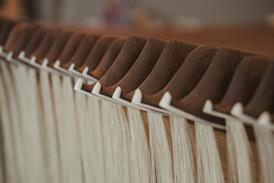
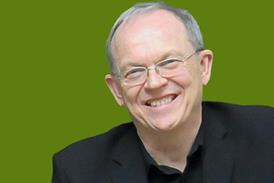
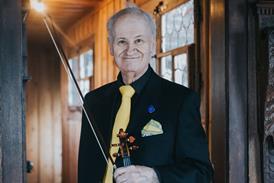
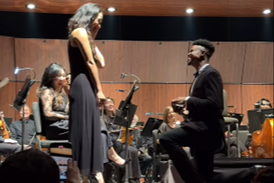
![[1st prize] Poiesis Quartet in round 3 (2)](https://dnan0fzjxntrj.cloudfront.net/Pictures/274x183/1/9/5/41195_1stprizepoiesisquartetinround32_547631.jpg)

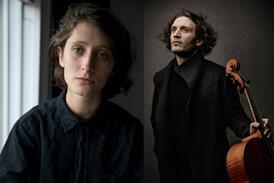


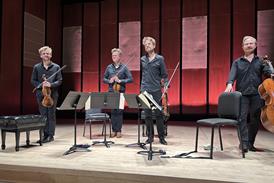

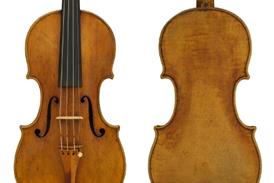

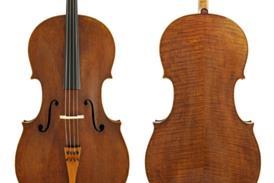
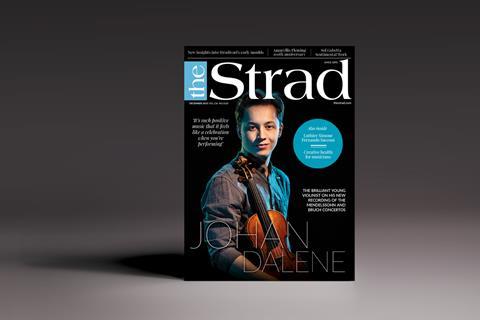
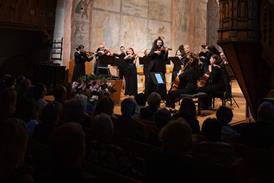


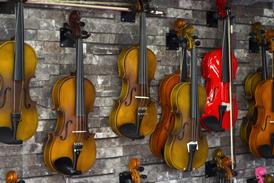

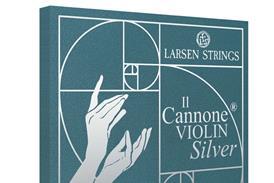

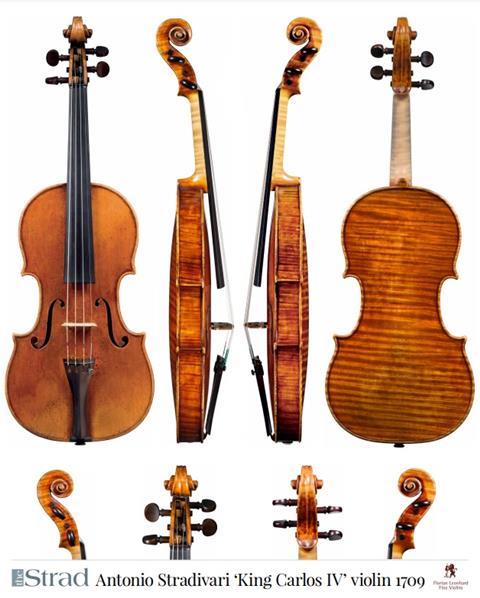
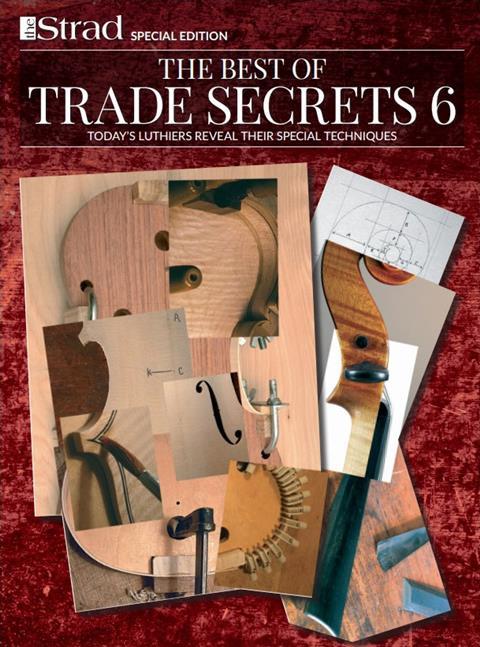

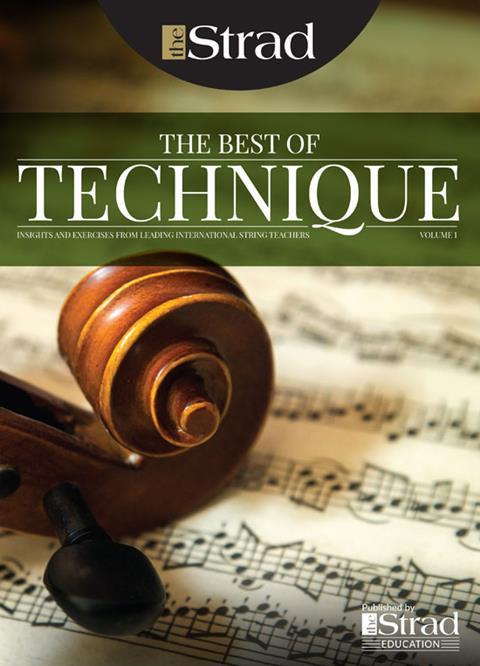
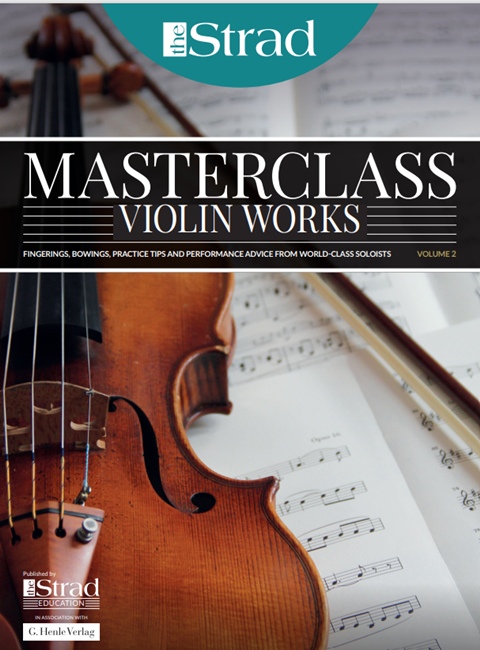
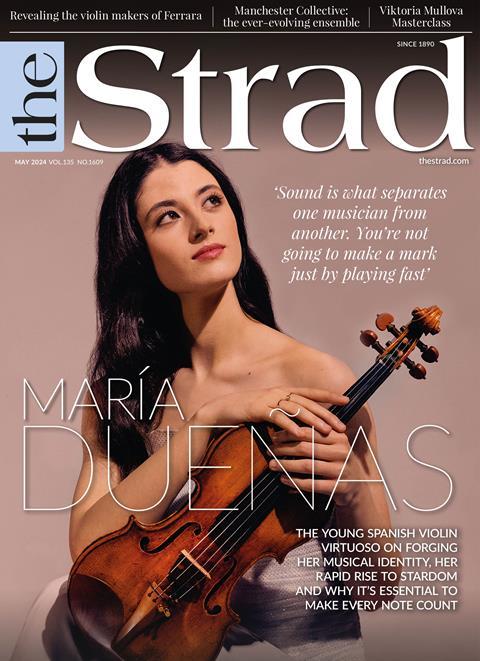













No comments yet